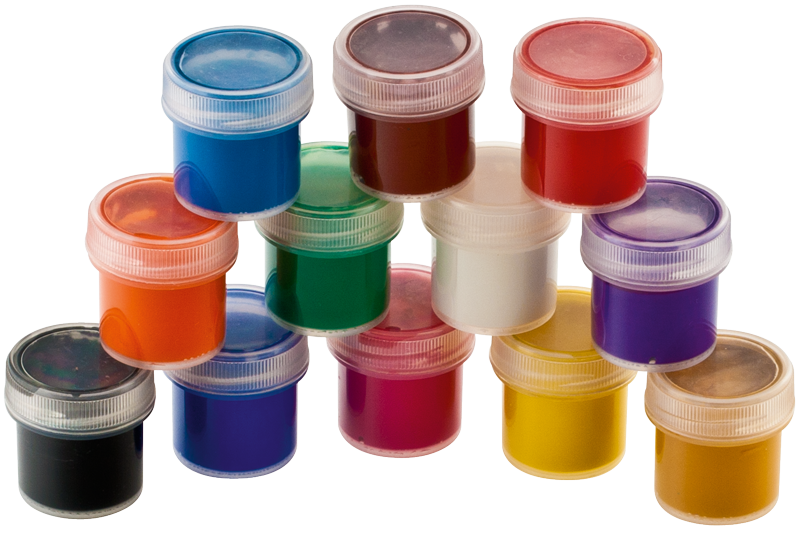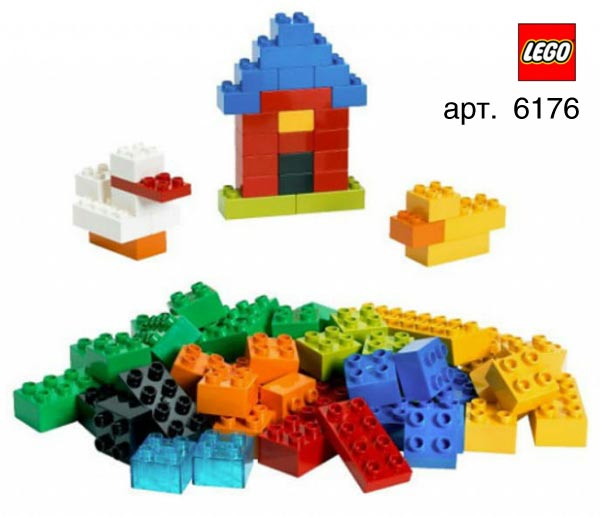Paints for drawing
Each artist has his own unique technique that allows him to create real works of art. However, in order to transfer all your thoughts and creative ideas to paper, you need to choose the right colors. After all, the point here is not only a harmonious combination of colors. It is important to find paints and varnishes that allow you to save your work for many years.
Some artists prefer to create bright enough pictures. They have a whole palette of colors and shades. Others like textured drawings in which every stroke is traced. There are also contemporary artists working with contours. To draw silhouettes of people or create entire landscapes on paper, you need to use different types of paints, depending on what you want to depict.
There are different types of paints for drawing and painting. They differ from each other:
- by composition,
- purpose,
- additional functionality that is inherent in the paintwork material of this category.
Sometimes, to find the right paint, artists experiment with different types of these paints and varnishes. This is the only way to understand how the paint falls on the paper and how long it takes for it to solidify.
You can find the paint that suits you right away, or you can decide which paint material you need by using various materials and dyes. It all depends on you and your desire to find the most suitable paint material for creative work.
There is a great variety of different paints for drawing. Depending on the material used and the composition of the paint, artists purchase in specialized stores everything they need to perform all subsequent creative work.
As a result, the choice of paint is up to you. Consider the most common types of paints and varnishes, which are often used by artists to create their masterpieces.
 All novice artists choose gouache for their creative work.
All novice artists choose gouache for their creative work.
This paint has excellent functional characteristics:
- dissolves in water
- acquires the effect of velvety,
- has a good color palette.
However, after it dries on the surface of the material, you can notice a slight pallor of the paint. Gouache turns pale due to the fact that it contains white.
But this is only a small drawback that can be hidden with the help of other auxiliary paints and varnishes. For example, varnish is sometimes applied to the finished work. It gives the work a shine effect, and gouache colors look new in the picture.
On the one hand, it is the simplest paint for drawing, which is primarily chosen by conversation artists. On the other hand, working with gouache is very difficult. After all, in order to achieve the desired color, you will have to experiment with shades. It is also somewhat difficult to achieve an even tone. Therefore, before applying the paint to the work surface, artists prefer to use small drafts that allow them to create the desired shades of colors.
 But over time, when you learn how to work with gouache, you will discover all the advantages of this paint. First of all, all the mistakes you made during your work can be quickly corrected. To do this, you just need to apply a new layer of paint, which will differ from the previous one in its density. This will hide all the shortcomings that you made while doing all the work with gouache.
But over time, when you learn how to work with gouache, you will discover all the advantages of this paint. First of all, all the mistakes you made during your work can be quickly corrected. To do this, you just need to apply a new layer of paint, which will differ from the previous one in its density. This will hide all the shortcomings that you made while doing all the work with gouache.
Remember, you can not apply gouache too thick. Indeed, after it dries, some elements of the pattern may crumble. The paint itself does not have a strong structure, if you work with it incorrectly, all defects and your mistakes will be visible after the paint is applied.
Try to slowly implement all the creative ideas you have conceived. This will avoid a large number of mistakes that even professional artists who neglect the rules when using gouache in their work can make.
Surprisingly, it is with this paint that children begin their creative journey. However, with the help of the same gouache, great artists create real works of art that fascinate with their beauty and originality.
With the help of gouache, the greatest works of art of such famous artists as Picasso and Rubens were created. Still think that gouache is just children's paint? It's time to take a fresh look at this unique paintwork material.
Watercolor
 Watercolor can be bright or pale, depending on the color you choose. It, like gouache, is able to dissolve in water, but unlike the previous paint, it has special functionality.
Watercolor can be bright or pale, depending on the color you choose. It, like gouache, is able to dissolve in water, but unlike the previous paint, it has special functionality.
The first layers of this dye give the paper a certain color. But the peculiarity of watercolor lies in the subsequent layers. After all, after applying and drying on paper, the paint gives it the effect of shine, without coloring the already applied words in a certain color. In fact, watercolor in this case appears on the work surface as a transparent emulsion.
Artists love watercolor precisely because of its properties. Transparency allows:
- give pictures a special color,
- highlight some details of the landscape,
- emphasize the most significant moments in the creative work.
In order to convey the full range of his emotions and feelings, the artist has only paint and paper on which he can depict the future work of art. Sometimes for expressiveness or completeness, the work lacks a certain shade. In some cases, paint applied in several layers can create the desired effect. But you need to know about these features of watercolor paints.
Ideally similar paints and varnishes are suitable for depicting landscapes. With the help of watercolors, artists often paint a changeable sky, playing with different colors.
In some cases, it is watercolor that helps to create portraits that can amaze with their mystery and unusual realism.
Any work done in watercolor will look perfect only if you do not make mistakes. Before doing all the paint work, practice on drafts first.
Even professional artists use small pieces of paper to check:
- how the paint lays down
- Is this color ideal?
- Is it worth it to apply watercolor in this way.
Only after the paint has dried can you determine whether you have done all the work perfectly or if there are any shortcomings. When working with this paintwork material, you can use various paint application techniques.
It's always nice to try something new and different. To see how a particular combination of colors can give a completely different idea of the same creative work. Surprisingly, two artists will draw the same flower in different ways. After all, everyone will use in their work different colors and shades, a certain technique that allows them to depict the object of interest to the artist on paper.
Perhaps watercolor is the best paint for artists. If you still do not know how to work with it, it's time to learn how to handle this paintwork material.
Video. Drawing in watercolor.
Magic shades of pastels
 What kind of paint is suitable for painters, because it is not paint that is used to apply it. The paintwork material itself is available in the form of convenient pencils or small crayons, which are very easy to draw on the work surface. This is the special appeal of pastel, because it is quite exciting to draw. The very fact that you don’t need to use a brush to work with pastel makes it a unique paint.
What kind of paint is suitable for painters, because it is not paint that is used to apply it. The paintwork material itself is available in the form of convenient pencils or small crayons, which are very easy to draw on the work surface. This is the special appeal of pastel, because it is quite exciting to draw. The very fact that you don’t need to use a brush to work with pastel makes it a unique paint.
There is no need to mix colors or dip the brush to get the right paint consistency. In fact, such a pencil becomes an extension of the hand, allowing the artist to create unique paintings using only paint and paper.
Despite the special composition of paints and varnishes, pastel is quite easy to work with.
On the other hand, pastels are very easy to work with. Just mix shades and get the colors you need right on paper. You can use a special shading or just rub the paint on paper with your fingers. Everything here depends on your desire and ability to do creative work professionally and correctly.
If you make small mistakes and oversights when working with paint, it is enough to simply hide them by overlapping one layer of paint with a different color or the same shade, creating a brighter and more saturated color.
Levitan is the most prominent representative of artists who worked professionally with pastels. His paintings are distinguished by an unusual play of color and all kinds of shades, which, in combination, created paintings of incredible beauty. Perhaps it is this paint that will become the most acceptable material for creativity for you.
Do artists need tempera?
 One of the most ancient paints used by artists is tempera. This paint is simply not able to change tone over time, it has good brightness. Tempera dries quickly, which is why it is especially valued among professional artists, for whom time plays a very important role.
One of the most ancient paints used by artists is tempera. This paint is simply not able to change tone over time, it has good brightness. Tempera dries quickly, which is why it is especially valued among professional artists, for whom time plays a very important role.
Working with this paint and varnish material is very interesting, because tempera is a paint that is quite durable in terms of its functionality.
Professional artists can use tempera to work in various techniques. Therefore, if desired, you can create the effect of watercolor or gouache.
Thanks to the use of such a unique coloring, you can create amazing paintings that combine the effects of different colors. It all depends on the original intention of the artist and his capabilities. Thus, it is possible to work with one paint, but at the same time it will seem that the picture combines several paints and varnishes that are identical in composition.
In addition to the various colors that the artist uses for his work, the most effective and important auxiliary tool is a simple pencil. Without it, it is impossible to draw the contours and sketches of the future of the picture.
The choice of colors depends on many factors. First, the artist decides what work will be depicted on the canvas. Only after this is the selection of appropriate paints and varnishes. Professional artists can paint pictures using only one paint or use several colorants that are harmoniously combined with each other.
related materials
Probably, everyone can recall a similar case for themselves, that during the repair period, more than once, due to their own inattention, they forgot to close the can of paint, from which the material, to great disappointment, froze and was no longer suitable for use. The following are examples of possible paint thinners that can help you salvage hardened paint, or simply thin new paint.
The issue of removing oil paint today is of great relevance, since this kind of problem occurs in almost every case of cosmetic repairs. An activity like removing paint can either be a matter of ten minutes for you, or it will appear to you more like a curse, taking hours of precious time, effort, and often money from you. Removing oil paint from walls is the most time-consuming process, and especially in cases where the paint is applied over plaster or concrete. However, if you still decide on a new painting, then the simplest, and therefore popular methods for removing oil paint from surfaces will be given and considered below.
Watercolor is a painting technique in which special water-based paints are used. As a result, a unique creation is created on the canvas, which has lightness, airiness, subtle color transitions.
- The latest methods of teaching traffic rules
- How to draw pictures by numbers
- Do-it-yourself home digital microscope
- How to choose the right paint for drawing
- When is the best time to sunbathe?
- What kind of bird is better to have in an apartment?
- We put an apostille on the birth certificate on our own
- Is it possible to give flowers in pots - signs
- How to make cat ears
- Gray bag: what to wear and combine?
- How to get started with Faberlic: tips for new consultants
- Bioinsecticide Lepidocid: purpose, properties and application procedure Lepidocide waiting period
- How to change the language to Russian in steam
- Dendrobium noble: room care
- Morphology of plants general concepts - document
- Planting, propagation and care of bamboo at home, photo Growing bamboo from seeds
- How to strengthen the cellular signal for the Internet in the country
- Sanskrit reveals the forgotten meaning of Russian words (2 photos)
- The oldest language Sanskrit programming language of the future Dead language Sanskrit
- Who has dominion over all the earth?








